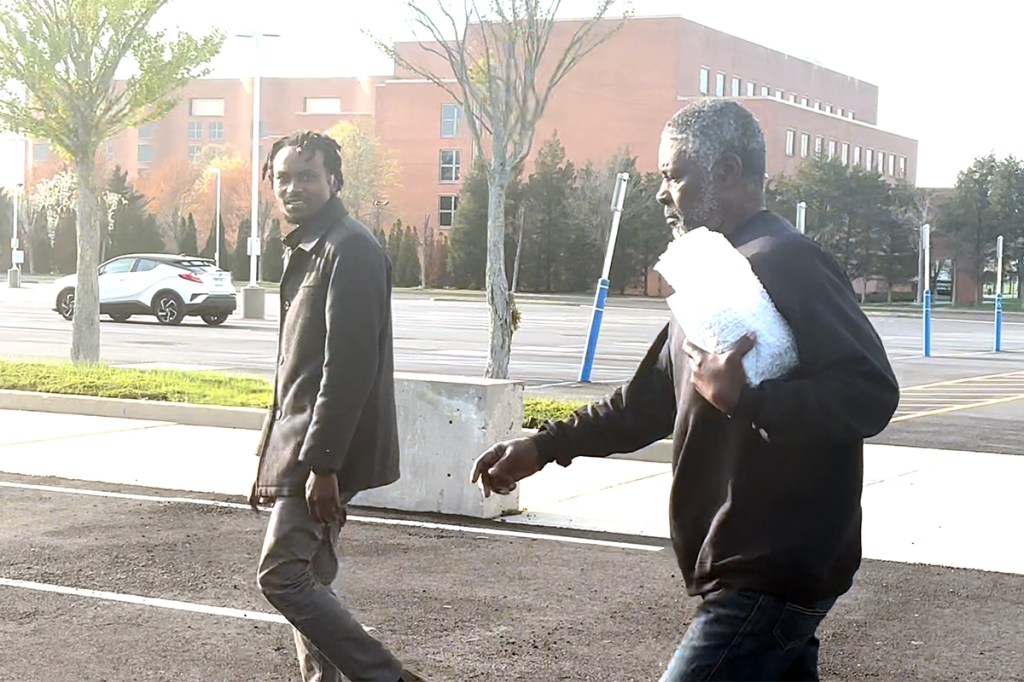Fight! For Your Life: Body, Mind, Spirit and East End Brazilian Jiu-Jitsu

Fans and practitioners of mixed martial arts (MMA), such as the hugely popular Ultimate Fighting Championship (UFC), cannot overstate the importance of Brazilian jiu-jitsu (BJJ) in the often-brutal sport. This self-defense system, made popular by the world famous Gracie family of fighters, is all about grappling and the ground game—proving that tying an opponent into painful submission holds is as essential to professional fighting as a devastating punch or kick. For regular folks who may never see the inside of a cage, BJJ is also a path to physical fitness and self-improvement.
Here on the East End, two local BJJ schools, Vamos Mixed Martial Arts (moving from Calverton to 67 E. Main Street in downtown Riverhead on February 1) and Hamptons Jiu Jitsu in Southampton (801 County Road 39), are teaching students of all ages the power of self-defense and, as the Vamos MMA website says, “how not to fight.” In addition to helping adults get lean and focused, both schools have achieved particular success shaping kids into confident, empowered and disciplined young men and women who have learned to rise above bullying, respect authority and enjoy camaraderie with their fellow BJJ students.

“We teach you to really build yourself up and build your confidence without having to show it,” Vamos MMA instructor and co-owner Ian Hill says, explaining that self-discipline, self-respect and respect of others are key benefits of learning martial arts. “A lot of tough guys want to fight and they want to use their words, but we teach you that you don’t have to do that,” he continues. “Self-image is huge, confidence and discipline—those are the three major things I teach the kids and the adults.”
Hamptons Jiu Jitsu owner and former Ross School fitness coach Greg Melita agrees, noting that BJJ is excellent for building confidence, especially for kids. “You talk about bullying, and it’s a big problem today,” the triple black belt holder (in karate, judo and BJJ) says. “I had a parent come in last week and was just crying and ecstatic because her son, who’s very timid, is now training here and loves it, and has friends here. Kids were picking on him, now all of a sudden it stopped,” Melita adds. “Most parents are afraid to put their kids in martial arts because they’re afraid their kid will hurt somebody. It’s the opposite effect.”

Neither instructor promotes fighting back against bullies. Instead, they teach students inner strength and the ability to rise above their tormentors. “We’re instilling self-defense, not fighting,” 37-year-old Hill says. “You’re not allowed to fight. When you leave this school, if you get into a fight and I find out about it, I have to let you go,” he warns, adding, “If you have confidence in yourself, it’s very hard to get bullied. You can talk yourself around the situation or just not be in the situation at all. That’s what I teach and preach: Be a leader, don’t be a follower.”
For adults and kids, 35-year-old Melita notes that BJJ also builds body and spatial awareness. “Controlling another person’s body, controlling their body—it builds their musculature in a certain way that other sports don’t,” he says of his students. “You’re getting in shape, you’re getting stronger. Your cardio is going up. When you do jiu-jitsu, you’re thinking about the moves, not getting in shape [like you do at the gym]. It’s the most bang for your buck. You’re learning self-defense, how to protect yourself, you’re getting a great workout. A lot of people have to go to three or four different spots to get all those things.”

Both Melita and Hill say prospective students should not feel intimidated to join their first BJJ class, no matter how out of shape or inexperienced. “We love everyone,” Hill says, sharing stories of two brothers who started at 300 pounds and are currently competing at 180–190 pounds, and another student who hoped to slim down to 210 pounds and is now “unrecognizable, in a good way” at 170. Hill, who weighs in at a trim 150 pounds, says he regularly spars with a 6’ 9” police officer student named Tom. “Everyone loves him… I don’t hurt him. He doesn’t hurt me. And it’s real sparring.”
“Naturally, everybody is intimidated to start,” Melita acknowledges, but explains that he has students with a wide range of ability and experience, and everything is scalable based on their ability. “You build based on your baseline…You’re always the nail before you’re the hammer,” he says, noting that students learn to fail well, which is an important component in finding success. “In school you’re taught lessons which prepare you for the test and you learn that way. In jiu-jitsu, you’re given a test and that’s the lesson. You’re thrown right in the mix.”

Echoing this sentiment, Hill says, “You need to fail to learn something. You have to fail and you have to be okay with failing, and you have to be able to pick yourself back up and keep going. That’s where the growth comes.”
Anyone interested in finding out how Brazilian jiu-jitsu and martial arts can benefit them or their children, can contact Vamos Mixed Martial Arts at vamosjiujitsu.com, or Hamptons Jiu Jitsu at hamptonsjiujitsu.com for individual classes or unlimited passes.



